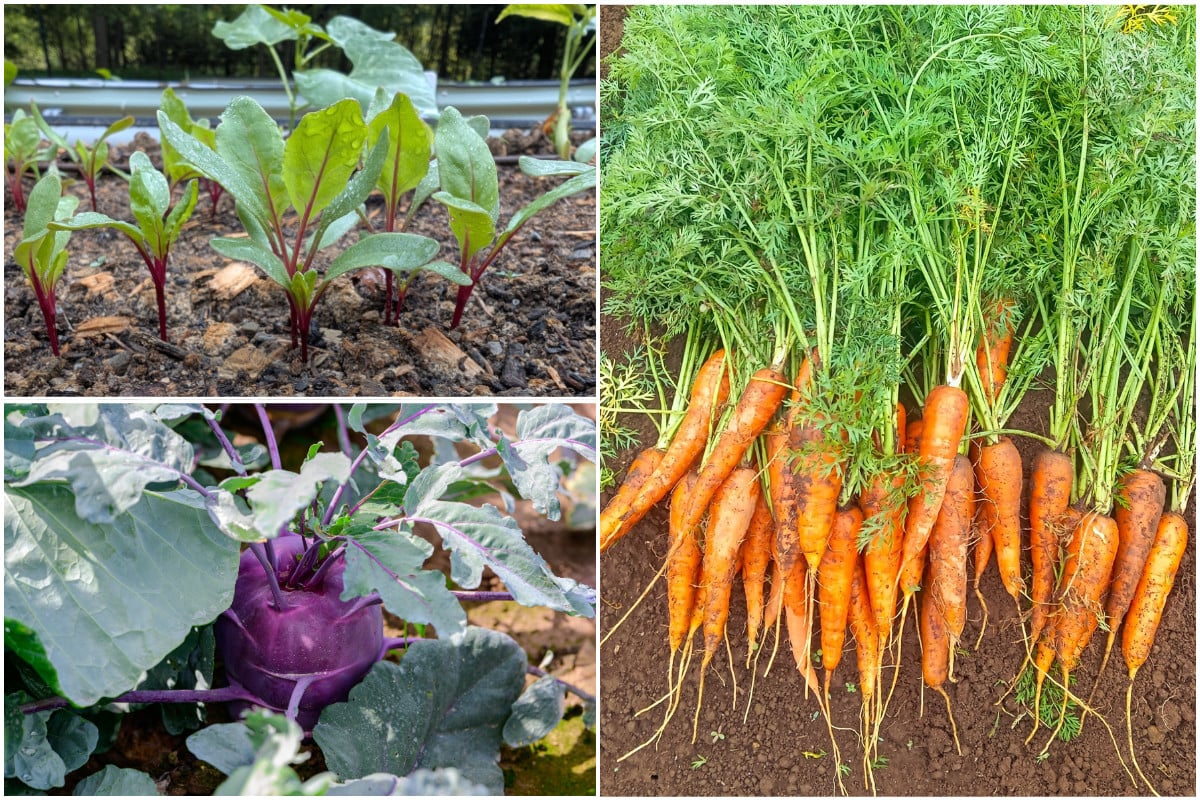
By the time September rolls around, there are two types of vegetable gardeners.
There are the ones that say, “Garden? What garden? That was summer. This is fall. I’m going to pick apples and buy mums, leave me alone.” And then there are those of us, frantically sorting through our seed packets, trying to figure out if we’ve got enough time for one more hyper-fast harvest.
Alright, fellow seed packet sorters, the answer is yes. No matter where you live in the States, you’ve still got time in September for another round of these speedy vegetables.
The secret?
Quick growers, cool-weather champs, and harvesting small. (Think fancy, artisanal baby vegetables. Because let’s face it, baby beets are more fun than big lunkers anyway.) Let’s take a look at what you can plant in September, no matter what hardiness zone you’re in.
Leafy Greens for Quick Wins
Soup and salad from the same garden? Don’t mind if I do. When you think about it, this time of year is actually kind of amazing. You can pick a butternut squash and make a hearty fall soup, and pick a salad to go with it.
If you only plant one thing this month, make it leafy greens.
These fast veggies germinate quickly, thrive on cooler nights, and you can eat them at just about any stage. That makes leafy greens ideal for squeezing in at the tail end of the season.
Arugula
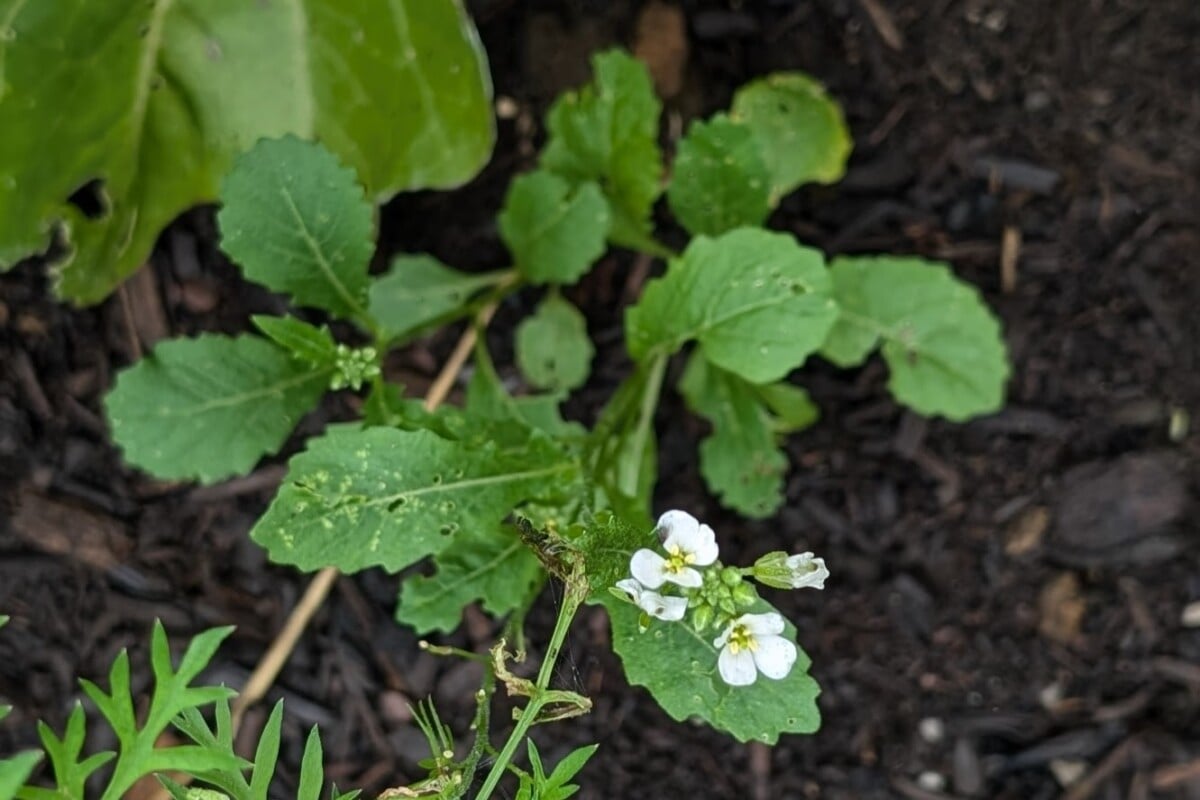
This wasabi arugula is my favorite. It packs a punch!
Peppery, zesty, and fast. Arugula, also known as rocket, can be ready for cutting in as little as 25 days. Scatter a row or two, and you’ll be harvesting baby leaves for salads before the month is out. Even better? Let one or two go to seed, and it will keep on popping up without you having to sow more.
If you want something really fun, give wasabi arugula a try. I discovered it about three years ago, and it’s my favorite rocket to grow. It’s amazing on pizza and gives even the most mundane salad extra pep.
Lettuce
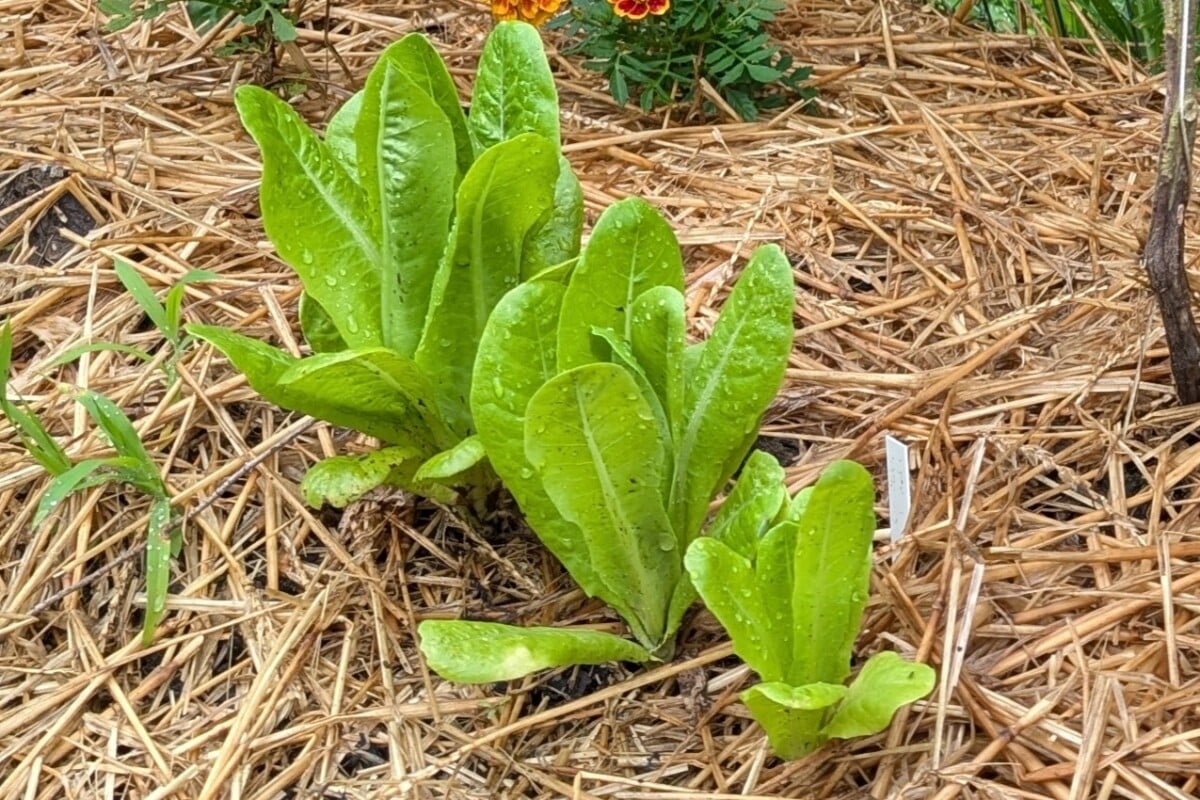
Forget waiting for full heads. Plant looseleaf or “cut-and-come-again” varieties, and you can start snipping baby leaves in as soon as 25 days. Sow thickly, harvest thinly, and keep the salad bowl filled. You can learn more about cut-and-come-again varieties here.
If you want something a bit more substantial, give any of the “gem” head lettuce varieties a try. I am obsessed with these! They’re easy and quick to grow, and one compact head is just right for a single salad. They’re the personal pan pizza of the lettuce world. I even grow them on my kitchen counter in the winter with my super-secret-under-cabinet-grow-lights. (Seriously, it’s the best thing to happen to my kitchen since soft-closing drawers.)
Here are a few varieties to try:
- Newham
- Kolibri (this one can be a stubborn germinator, so I always plant a few extra seeds, but it’s worth the fuss)
- Gatsby
Spinach
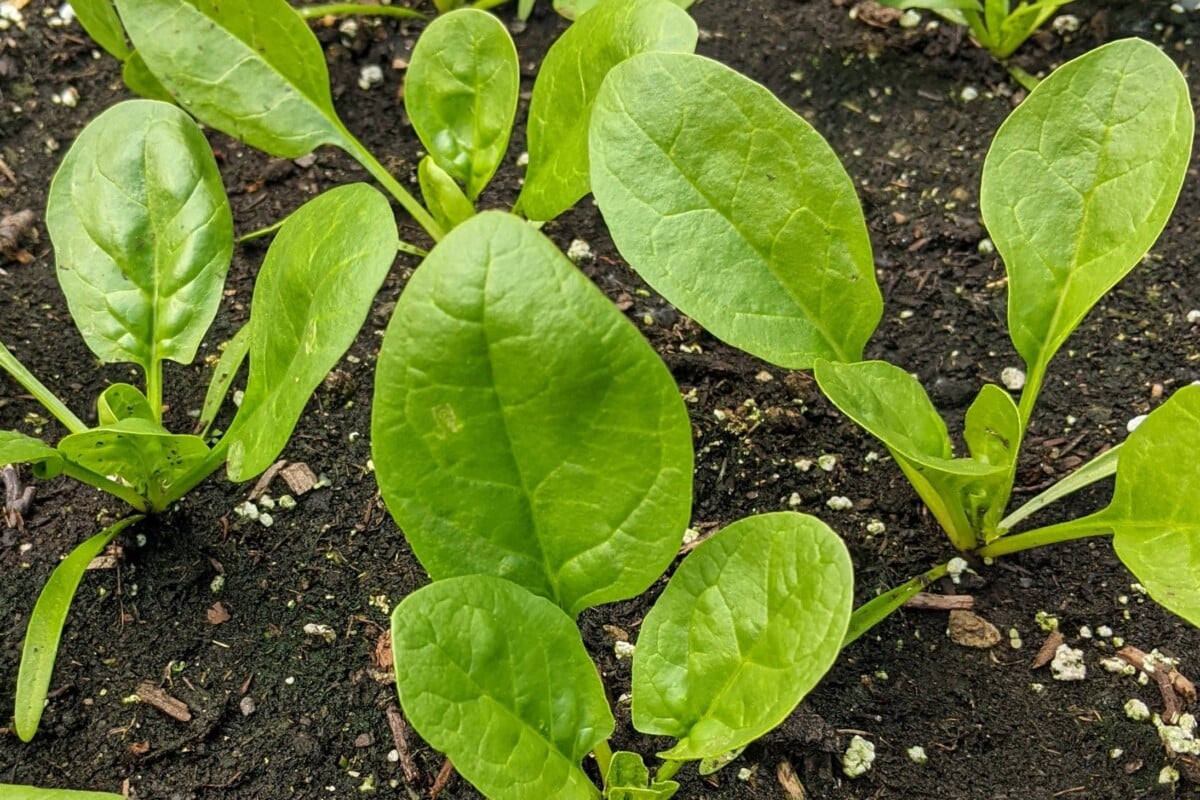
This cool-weather classic thrives in fall. However, spinach likes to bolt in the heat, so if you’re enjoying an Indian summer, you may want to wait until further along in the month. It germinates best as temperatures dip, and young leaves are ready in 30–40 days. Because spinach is cold-hardy, you can even continue to harvest past your first frost if you toss a bed sheet or row cover over it.
In fact, my favorite time of year to grow spinach is in the fall because that first frost knocks out all the pests, which means no leaf miners!
My two favorite spinach varieties are:
Mustard Greens
Spicy and bold, mustard greens love cool soil and chilly mornings. Easily harvest baby leaves in under a month, or let them size up a bit for braising. Like quite a few other fall-friendly veggies, a light frost will actually mellow their flavor.
It took me forever to come around to growing mustard greens in my garden, but I can’t recommend them enough. I love them in salads (they’re much more flavorful and sturdier than lettuce), soups and stir-fries.
Asian Greens (Tatsoi, Mizuna, Bok Choy)

Purple Bok Choy
These guys are in it to win it! Asian greens are some of the fastest growers you’ll find. Tatsoi and mizuna can be ready in about 30 days, while baby bok choy is harvestable in 40. They’re tender, versatile, and bolt-resistant in the fall.
Asian greens tend to be another veggie that many people shy away from because they’re unsure how to cook them. If you’re curious, I would recommend bok choy. They’re wonderful roasted! I spritz them with olive oil and hit them with a little salt and pepper. The natural sugars caramelize when roasted. Give them a try this fall!
- Miz America Mizuna – grow this gorgeous burgundy mizuna and you’ll be eating and decorating for fall
- Tatsoi – I honestly don’t know which part I like better, the spinach-like leaves or the crunchy stems
Roots You Can Squeeze In
Okay, it’s quite probable that you won’t have time for long-season carrots or massive beets, but quick roots are still on the table. (Literally, hehe.) The trick is to harvest them small—think “baby vegetables” instead of supermarket-sized. And let’s be honest, baby vegetables are often sweeter and tastier than their full-grown cousins anyway.
Radishes
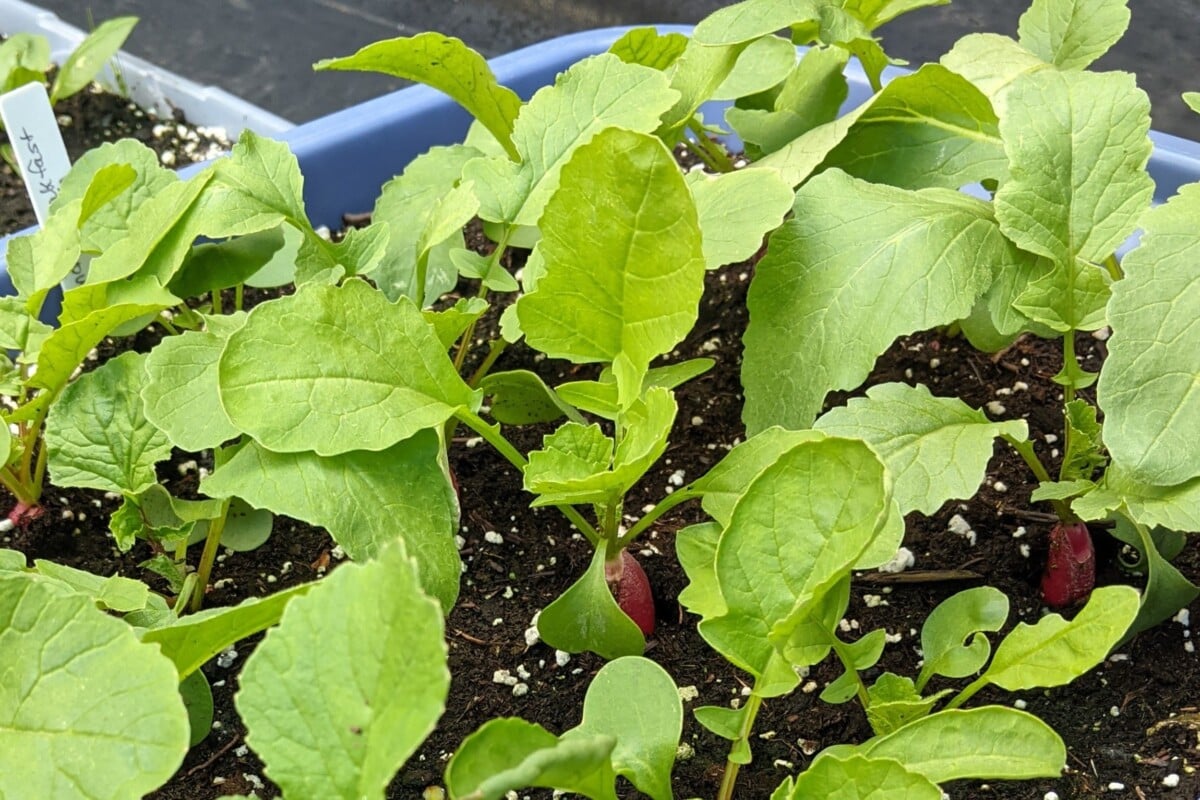
Come on, you knew they would be on this list. In spring or fall, radishes are the quintessential cool-season quick crop. Most varieties are ready in 25–30 days. Plant a row every week in September, and you’ll have a steady supply until frost.
As far as which variety you should grow, that’s up to you, but my favorite by far is good ol’ French Breakfast radishes. (Did you know you can roast them?)
Turnips
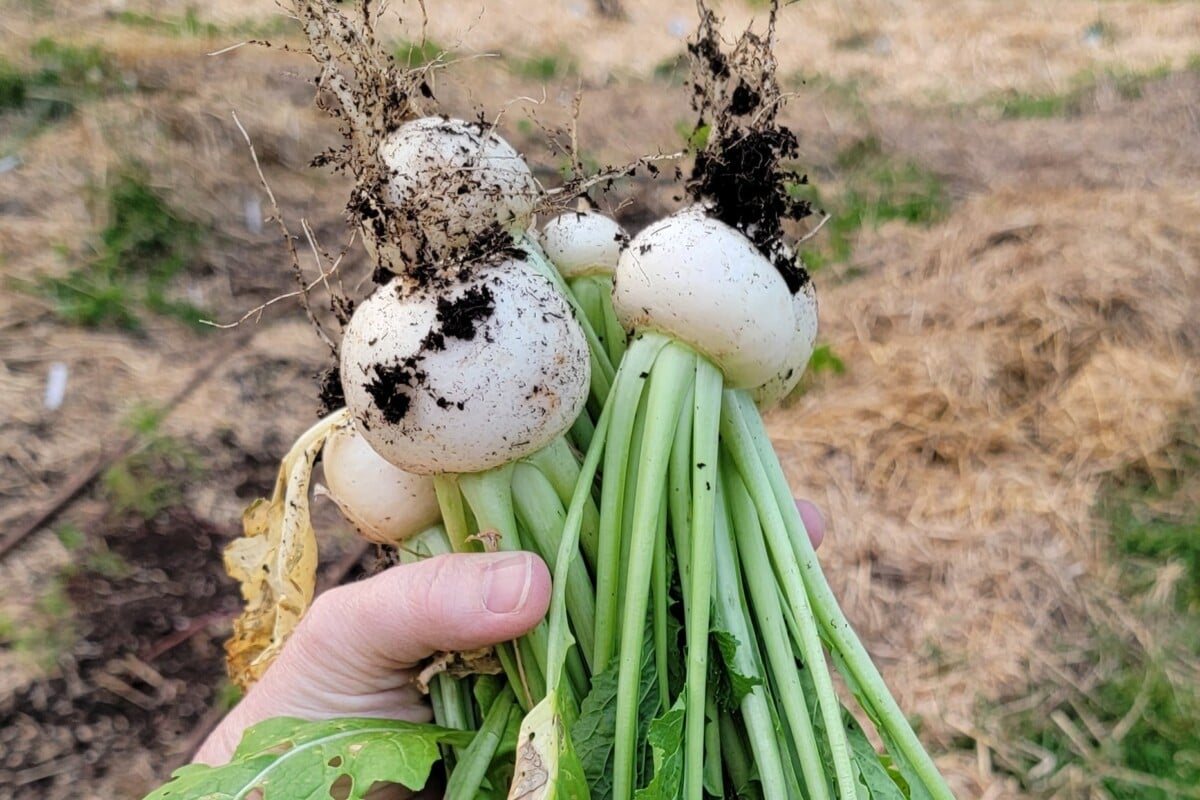
If you haven’t discovered Japanese salad turnips yet, you’re missing out. For decades, I thought I didn’t like turnips because the only ones I ever ate were giant, boiled things that came out of my grandmother’s garden. (Sorry, Gigi!)
Then I discovered Hakurei turnips at a farmers’ market, and my life was changed.
These small, white turnips are sweet, mild, and ready in 30–40 days. Eat them raw, roasted, or sautéed. They also make for great pickles. These are in my garden every spring and fall. I treat them like radishes and plant a new row every week through September.
Beets
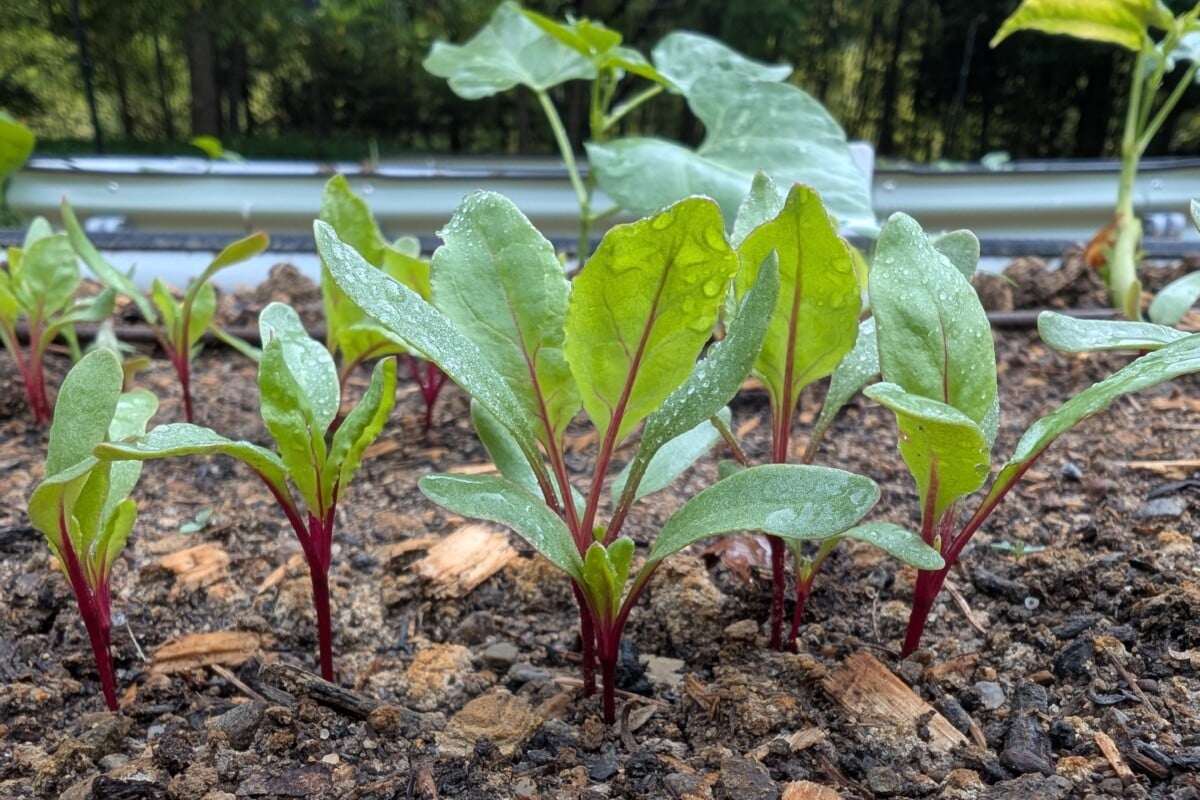
We’re not talking about the baseball-sized beets you get from a summer of growth. Instead, we’re growing fancy wee baby beets. If you really want to impress your friends and neighbors, tell everyone they’re artisanal beets.
The bonus here is the beet greens! It’s like getting two September veggies in one. I always make a salad when I thin my beets using the tiny baby beets I’ve thinned. Then, as the beets grow, you can snip some of the leaves for salads. (Just be sure you leave at least 3-4 leaves per beet.)
Pull your artisanal baby beets in about 40-50 days. And don’t forget to plant enough for pickles. Pickled beets are way better if they’re bite-sized. Just sayin’.
Carrots
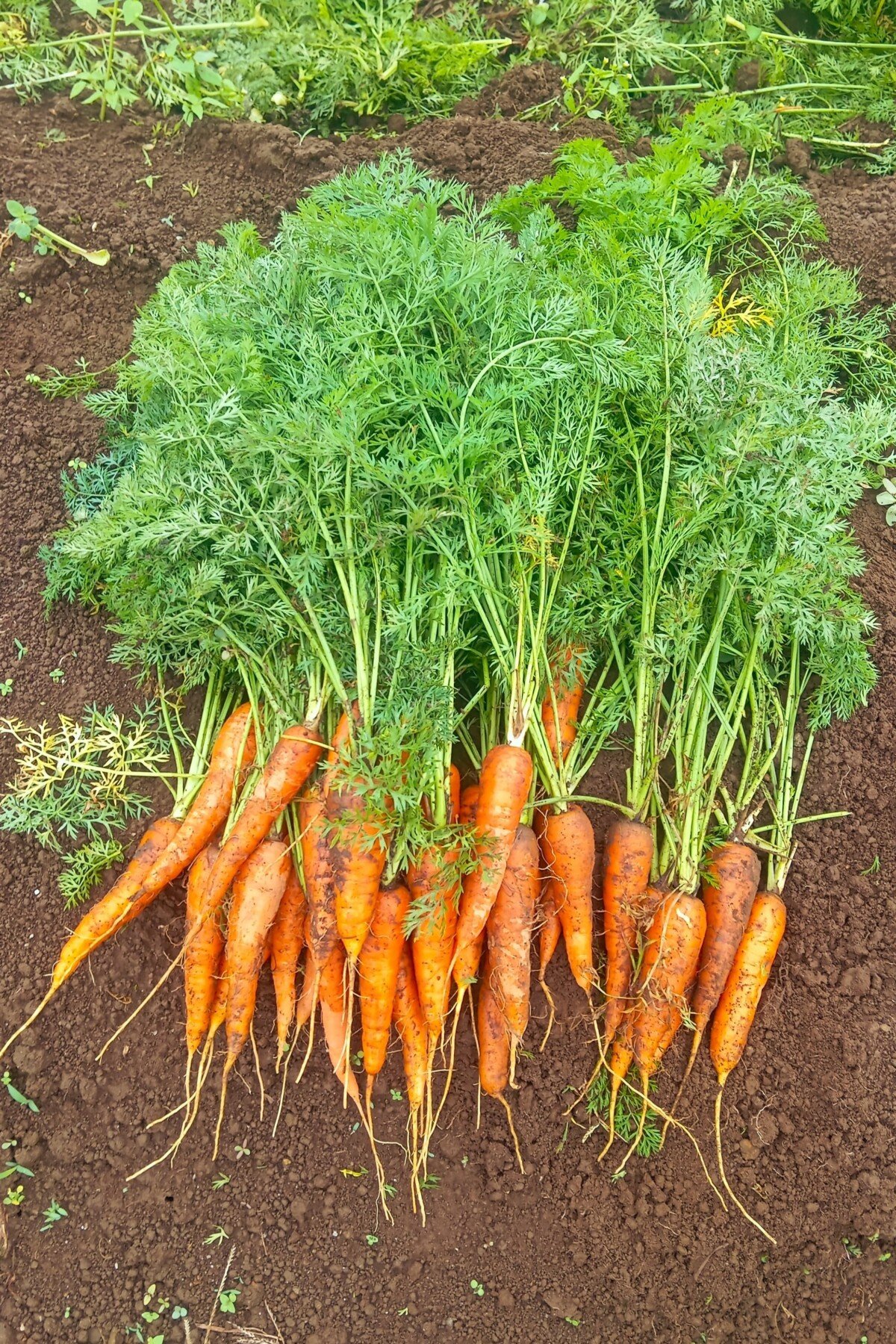
Freshly harvested carrots are a favorite fall veggie.
Okay, here’s where things get a little sketchy. Most carrots need at least 70-90 days to grow, but there are options. Choose a short-season variety that will be ready in 50-60 days or less, such as Shin Kuroda or Caravel.
Or, you can jump on my bandwagon. (I’ll help you up.) I am in love with Kyoto Red Carrots. These bright red Japanese carrots only grow well in the fall. I can’t even grow them in the spring because it warms up too fast, and they bolt. They do not like the heat! Sow them now and let them enjoy the chilly weather as they grow. In around 70-90 days, you’ll harvest some of the sweetest carrots you’ve ever eaten in your life!
Herbs That Still Shine
It’s bonus time! To go with your veggies, here are a few quick herbs you can still grow in September.
Cilantro
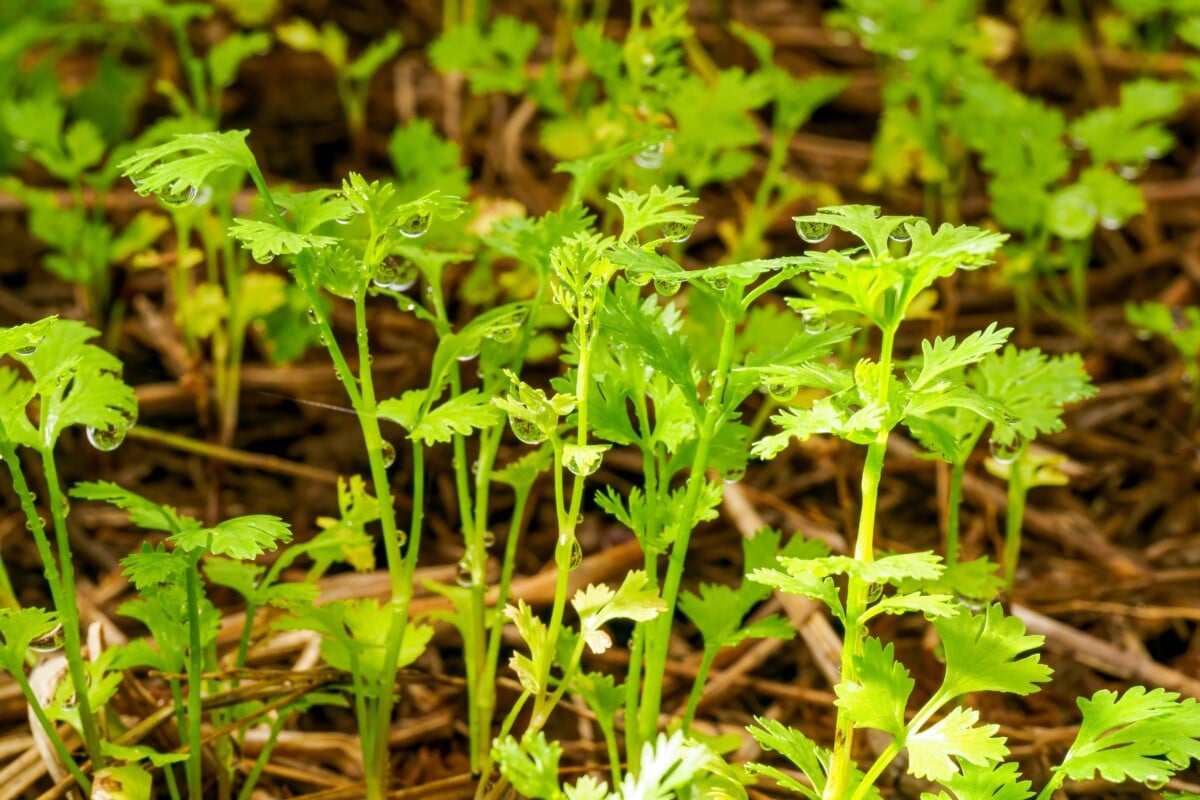
Taco definer or taco destroyer?
I know, it’s not for everybody. But for those who don’t taste soap when they eat it, fall is actually the best time to grow cilantro. It bolts fast in summer heat, but in September’s cooler weather, it lasts longer and gives you that fresh punch of flavor for tacos, curries, and salsas. Ready in about 25 days.
Dill
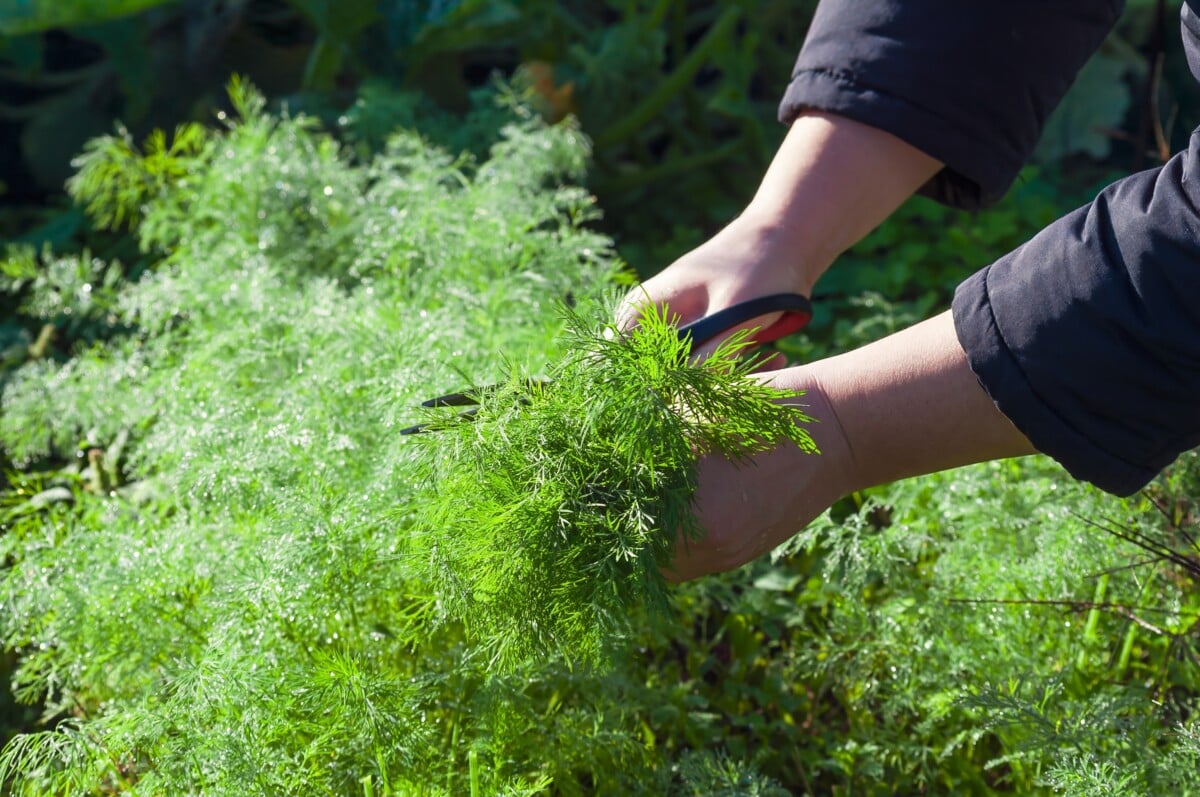
Another herb that does better in the cooler shoulder seasons is dill. Sow a quick patch and use it young. It’s the perfect fall planting for those last few pickling projects and all your egg and pescatarian dishes.
Frost-Tolerant Champions
These guys get a gold star, or maybe it should be a frosty blue star. One of the best reasons to plant in September is that some vegetables actually improve after a frost. Cold triggers the release of natural sugars in the leaves, making them sweeter. Yup. Plants are cool, yo.
Kale
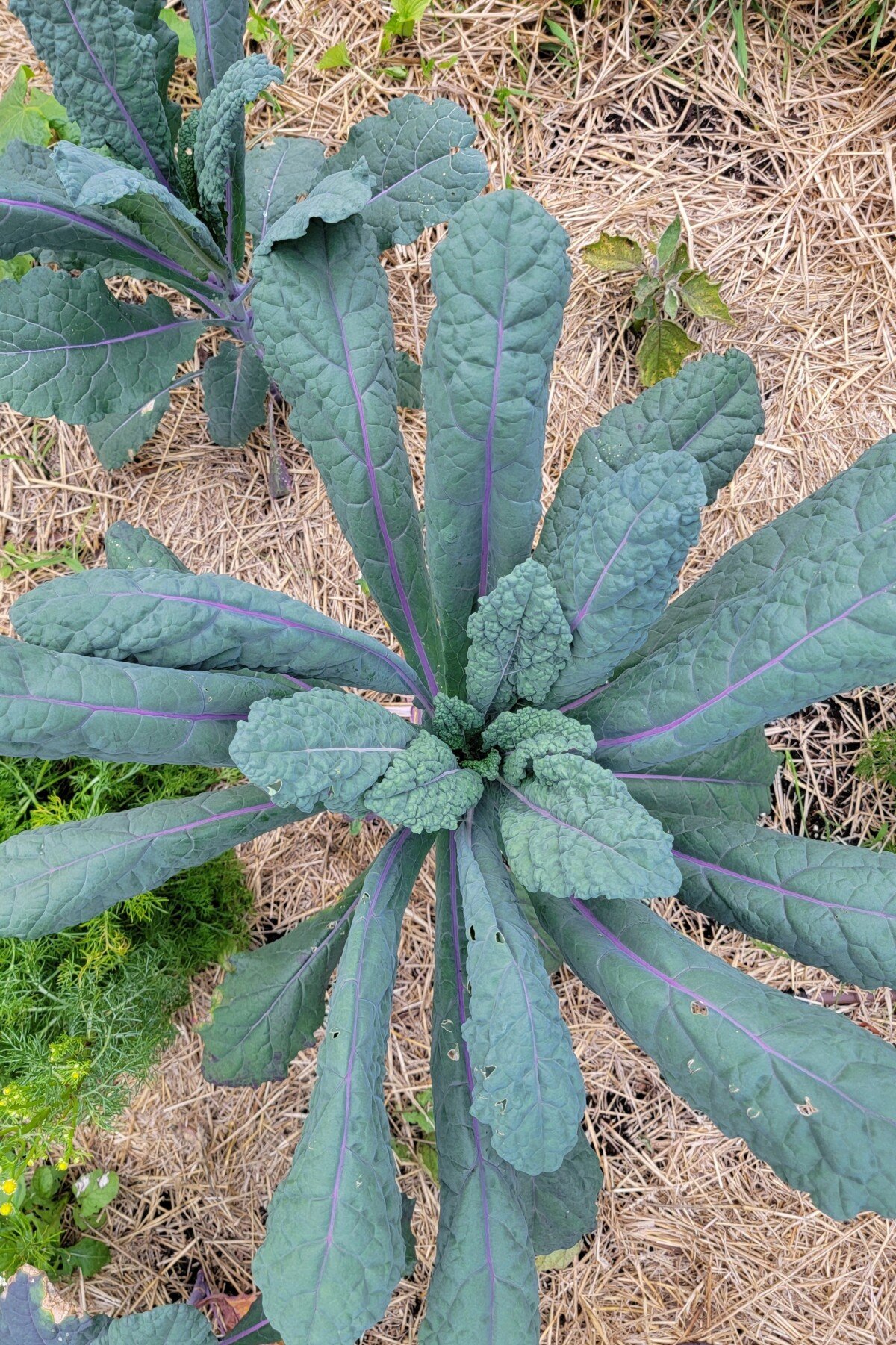
Dazzling blue kale has beautiful pink/purple seams.
I don’t even bother to plant kale until the fall anymore because it’s tough as nails, will shrug off frost and keep producing well into the winter. And as stated earlier, all the stupid cabbageworms are dead by then.
Plus, kale actually tastes good after a frost or two. (What? You were thinking it, too.) Plant it now, and you’ll be harvesting baby leaves in a month, with bigger leaves carrying you into winter. Kale at Christmas? Yup, we’ve done it before.
Dazzling Blue is my all-time favorite. It’s gorgeous and tastes great. (Ya know, for kale anyway.)
Collard
It’s funny, as this is a Southern staple, but it sure does love it when the weather cools down. These greens are rich, hearty, and perfectly happy to grow right into frosty mornings.
Kohlrabi
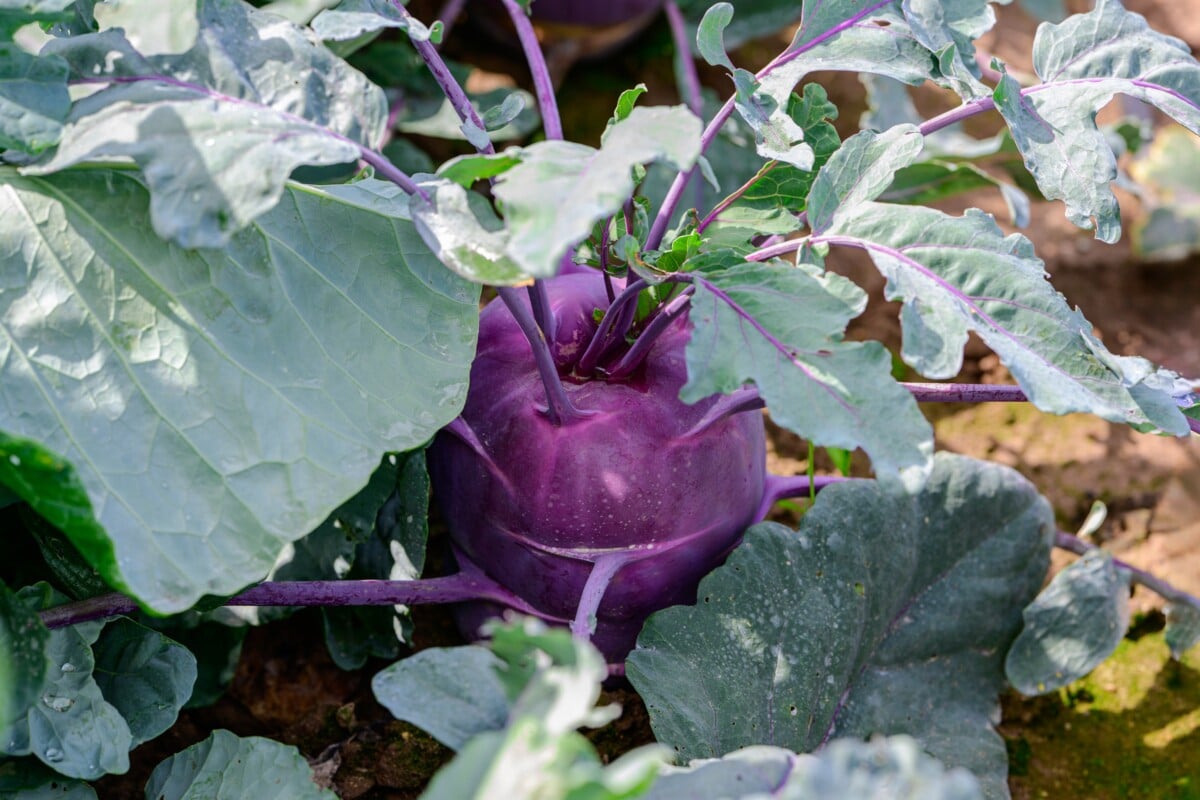
This is another one of those “weird” vegetables that folks tend to shy away from. If you’ve never tried (or grown) kohlrabi, let me break it down for you. It starts with broccoli. Yup, broccoli. The sweetest and best-tasting part of broccoli is actually the thick stem, not the florets that get stuck in your teeth. Fewer kids would hate broccoli if we pitched the tops and ate the bottoms.
Guess what kohlrabi is? It’s basically the broccoli stem in baseball form. And most are ready to harvest in 45 days.
Strategies for September Success
To make the most of your shrinking growing season, there are a few things to keep in mind:
- Choose quick-maturing varieties. Look for anything listed as 30–45 days to harvest, 60 days max and only if it’s cold hardy. Ignore anything that needs 70+ days, as you’ll likely run out of time.
- Think “baby harvests.” You don’t need full-size heads or roots. Pull and cut vegetables small; they’re often more tender and flavorful anyway.
- Succession plant. Sow radishes, turnips, arugula, and lettuce every week or so. That way, you’ll have fresh harvests right up until frost.
- Use row covers. Surprise frost? Easy. A simple fabric row cover (aka a bedsheet) or cold frame can buy you a few extra weeks.
The Joy of Growing Veggies in September
Here’s the thing. September isn’t about filling the pantry or bumper crops. It’s about getting the maximum from a growing season and staving off over-priced, paltry supermarket produce as long as we can. Every salad, every side of roasted turnips, every charcuterie board with baby pickled beets is a victory.
There’s something deeply satisfying about walking outside in October, frost on the grass, and harvesting fresh spinach or pulling a handful of turnips to roast for supper.
So no, September isn’t too late. It’s the month of quick greens, baby roots, hardy herbs, and frost-kissed leaves. All you need are a few packets of seed and a bit of patience while you wait. Go join your apple-picking friends, and you can be all smug about all the fresh produce you’re still harvesting.
The post Vegetables You Can Still Plant in September (No Matter Where You Live) appeared first on Rural Sprout.
